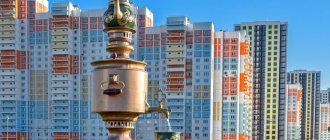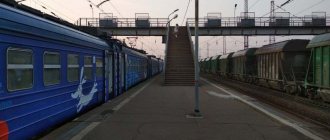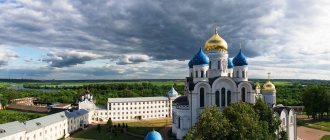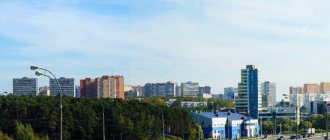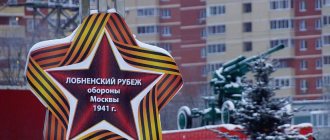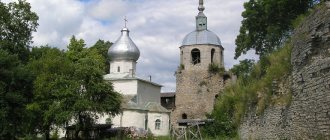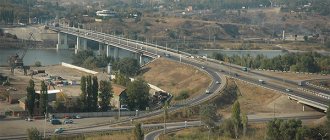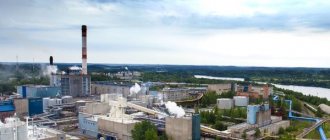Balashikha
Video: Balashikha
Basic moments
Since ancient times, Balashikha has been a center of textile production. And today, various enterprises operate in the city, for example, a foundry and mechanical plant, an aviation corporation, etc.
The modern city of Balashikha grew up on the site where ancient villages and hamlets were previously located - the villages of Novoe, Pehra-Pokrovskoye, Pehra-Yakovlevskoye. Today, the most interesting part of the city for tourists is the New Quarter.
Tourists should visit Balashikha to admire the beautiful estates of Pehra-Yakovlevskoye, Gorenki and Poltevo, take memorable photographs against the backdrop of the wonderful nature of Balashikha and visit the magnificent churches - Alexander Nevsky, Transfiguration of the Lord, etc.
Climate
The climate of Balashikha is moderate continental, with pronounced seasonality. The number of cold days per year with temperatures below 0 is about 120-135 days from November to March. The coldest month of the year is January, the warmest is July.
Attractions
Sights of Balashikha - beautiful architectural ensembles dating back to the 18th-19th centuries. and located within the city. Thus, we recommend that tourists visit the estates of Gorenki (today a sanatorium), Pehra-Yakovlevskoe, Poltevo.
Other interesting sights of Balashikha are the churches: Intercession (XIX century), Nativity of the Virgin Mary (XIX century), Transfiguration Church with rich interior decoration and in the past - an iconostasis, in the painting of which the Italian master Stefan Torelli took part and which, unfortunately, has not been preserved.
We recommend that tourists pay attention to such attractions of Balashikha as museums: the Local History Museum in the regional center of the city, the Museum of Air Defense Forces, and the Art Gallery. It is also interesting to see the Radio Mast, and then take a walk in the Balashikha City Park and take wonderful photographs as a souvenir.
Excursions
Interesting excursions in Balashikha include a sightseeing tour of the city, a visit to the Gorenki estate, as well as other estates - Pehra-Yakovlevskoye, Trinity-Kainaradzhi with a magnificent church built in the style of French classicism.
Another interesting excursion in Balashikha is a visit to the Local History Museum, which reflects the history of the development of the region. A visit to the Art Gallery in Balashikha will also give tourists a lot of pleasure.
Story
The history of Balashikha began a very long time ago - for example, the first settlements in the vicinity of today's city existed in the 7th century BC. In the 10th century, Slavic tribes lived in this territory. Let us note that in Balashikha and its environs, scientists have discovered over 350 mounds, in particular, Vyatichi and Krivichi.
The most ancient part of modern Balashikha is the Novsky quarter, which until 2004 was the village of Novaya. Interestingly, the first mention of this settlement dates back to the 14th century. Soon other settlements appeared - the villages of Pehra-Yakovlevskoye and Pehra-Pokrovskoye, their names come from the tribe that lived in this fertile land back in the days of Vladimir Rus.
The history of Balashikha began in 1830: it was then that Prince Trubetskoy opened a cloth factory here. In 1837, the Balashin manufactory was founded. The region was gradually developed; in 1925, the settlement “Unification” appeared, intended for factory workers.
In 1939, the history of Balashikha as a city began thanks to the resolution of the Presidium of the Supreme Council. Balashikha included such settlements as the village of Pervomaisky, Gorenki, Grabari, etc. After the Great Patriotic War, active construction of the city and industrial development took place in Balashikha. In 1954, a Culture and Recreation Park was opened with attractions, a summer theater and a billiard room.
In 1960, the Balashikha district (part of it) joined Moscow.
Accommodation
Hotels in Balashikha are several hotels of the economy category, a night's stay in which will cost tourists from 350 rubles. These are Balashikha hotels such as “Adonis” and “Sport” on the territory of a sports club.
Another option is to stay at the Druzhba sanatorium, where you can improve your failing health.
Balashikha hotels of a higher category include the East Gate Hotel 4*. A day's stay in this hotel will cost tourists 4 thousand rubles.
Sports and active recreation
Active recreation in Balashikha includes playing billiards, bowling, walking around the city, and cycling.
There are 2 football teams in Balashikha. The city also hosts international junior tennis tournaments, as well as boxing tournaments.
Tourists can play hockey at the Balashikha Arena sports complex. A ski resort called “Fox Mountain” has been opened in the south of Balashikha. Not far from it is Q-Park, where you can go snowboarding.
In addition, tourists can enjoy the Balashikha equestrian sports complex and the Wake Family Park, where they can practice wakeboarding.
Transport
Public transport in Balashikha is an extensive network of bus routes (16 routes in total), minibuses, as well as a passenger taxi, which can be called from any city hotel. We draw the attention of tourists that the cost of travel should be discussed in advance.
Souvenirs
Balashikha souvenirs include refrigerator magnets, decorative plates, and cups with the symbols of the city.
Also interesting are souvenirs from Balashikha, such as locally produced textiles.
In addition, in Balashikha they make good souvenirs from wood - wall panels, chess, neat elegant boxes, etc.
It is interesting to take beautiful photographs of Balashikha estates and create a memorable photo album, which will also become an interesting gift from Balashikha.
How to get there
Tourists can get to Balashikha from Moscow in several ways:
- By car along Entuziastov Highway or Shchelkovskoye Highway. Balashikha is only 5 km from the Moscow Ring Road. But the travel time from the center of Moscow, taking into account, is about 40 minutes.
- By bus from the metro stations "Shchelkovskaya", "Yuzhnaya", "Partizanskaya", "Izmailovskaya", "Novogireevo". On average, the journey takes from 30 to 40 minutes.
- By train from Kursky station. Travel time is 40 minutes.
Symbols of the city
In the fall of 2015, the updated flag and coat of arms of Balashikha were officially presented to everyone. This renewal was primarily associated with the annexation of Zheleznodorozhny, a previously independent settlement, into the city. Accordingly, the new flag and coat of arms of Balashikha combined the heraldic symbols of two cities - the abolished one and the now existing one. This:
- compass;
- cogwheel (gear);
- tree branch;
- arc-arch with a bell;
- rising Sun;
- and a railway track.
When developing a new concept for city symbols, heraldists listened to and took into account all the wishes and recommendations of local residents. In addition, they deeply studied the history and characteristics of both settlements. That is why both the flag and the coat of arms of Balashikha turned out to be extremely interesting and informative.
Pehra Pokrovskoye Estate
This ancient estate belonged to Grand Duke A.D. Menshikov. After he fell out of favor and into exile, the estate came into the possession of the Epiphany Monastery. Then it passed to various representatives of the merchant class. It has not survived to this day. All that remains is the linden park and the Church of the Intercession of the Blessed Virgin Mary, which has a centuries-old history and is a landmark of the city of Balashikha.
Balashikha coat of arms - what does it mean?
The city coat of arms is a French type shield. It is also divided into four rectangular fields of equal size. In terms of color design and selection of graphic objects, the modern coat of arms of Balashikha is practically no different from the flag of this city. There is only one distinguishing detail. On the coat of arms, unlike the flag, there is an additional figure - a railway track.
What do all the images that are present on the modern coat of arms of Balashikha convey? It's actually very simple:
- the compass is a symbol of local scientific and technological achievements;
- the gear represents the development of the city (primarily industrial);
- the tree branch hints that Balashikha is part of the so-called green zone of Moscow;
- the rising sun is a classic symbol of the desire for knowledge and development;
- the white track is an image of the railway laid here back in 1862;
- the horse arch with a bell is a direct hint that the city stands on the ancient route connecting Moscow and Nizhny Novgorod.
Textile factory and other pre-revolutionary enterprises of Balashikha
The history of the city of Balashikha dates back to 1830, in which Prince Trubetskoy, together with the merchant Pavel Moloshnikov, began building a small cloth factory. At first it was located in a wooden building built on the site of a water mill. In 1846, Pavel Moloshnikov re-equipped the factory, and it began to produce cotton textiles. The main production is located in a five-story brick building.
By 1850, the factory employed more than 500 workers and produced more than 5,000 pounds of yarn per year, which brought the owners about 130 thousand rubles of annual income. In 1850, the factory was equipped with a steam engine purchased from Great Britain. For its installation and operation, the English engineer Michael Lunn arrived in Balashikha, who remained the technical director of the factory for 45 years. In 1873, he became one of the co-founders of the Balashinskaya Manufactory Partnership. His companions were merchant manufacturers Mikhail Shcheglov, Pavel Shelaputin and Ivan Karzinkin. Two years later, the enterprise's fixed capital reached 600 thousand rubles. The number of workers in 1879 exceeded 900 people, in 1890 it amounted to 2,687 people, and in 1903 more than 3,000 people worked at the factory.
Gradually a factory village emerged. Its architectural appearance was finally formed in 1907-1910.
By the time the First World War began, the factory and the village of Balashikha had turned into a complex and branched economic organism, on the territory of which, in addition to production facilities, there were barracks-type dormitories for workers, a hospital facility, an elementary school and a workers' college, an almshouse, a railway station, a post office and a telegraph office. A power transmission line ran from Bogorodsk to Balashikha. And peat mining was carried out around Lake Biserova, supplying the factory steam engines with fuel.
In 1821, merchant Ivan Chetverikov founded a cloth factory nearby. Its production volumes in the first decades were very small. By the middle of the century, it employed 92 people. In 1903, it belonged to the Trading House of I.F. Petrov and I.V. Shcheglov, and there were 355 employees. In 1907, the factory was seriously damaged by a major fire. In 1908, a new building and water tower were erected. The architect Ivan Pozdeev worked on their project. Since 1903, he was the architect of the Cathedral of Christ the Savior in Moscow.
Where previously there was a water mill in the village of Gushchinka, at the beginning of the 20th century, manufacturer Alexander Pimenov founded a small enterprise that produced artificial sheepskin.
Balashikha Cotton Spinning Factory
The history of the city literally began with the Balashikha factory. To make it work, workers were needed. The factory becomes a city-forming place. A village was formed around it, barracks were built where the workers lived. Once it started operating, the factory brought in a good income. In 1844 it was sold to the merchant Moloshnikov. A fire at the factory in 1847 destroyed all the buildings. Construction of two new brick buildings began on the site of the fire.
Since 1950, management of the factory passes to the widow of the merchant. She, understanding the complexity of managing the factory, invited a managing specialist from England to the position, who had been involved in the affairs of the factory for 45 years. Then the factory is transformed into a partnership; 1,200 people work on its machines. As the factory grew, it improved the life of its workers. A school, a college and a hospital with an almshouse appeared. In 1912, a railway line was built to the factory, and preparations were being made for the production of new products, but in 1918 the factory was nationalized.
By the way, the Museum of Local Lore presents extensive material about the factory, which is one of the attractions of Balashikha, with photos of all the transformations and modernizations that took place there over all the years of its existence. The factory is still operating, but a large number of its premises are rented out.
